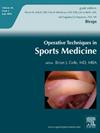什么是失败的肩部不稳定…它不仅包括复发性脱位
IF 0.7
4区 医学
Q4 SPORT SCIENCES
引用次数: 0
摘要
肩关节不稳,尤其在运动员和军人中普遍存在,在诊断和治疗方面都提出了重大挑战。本章探讨了肩部不稳定的多面性,区分脱位和半脱位,并强调了谨慎选择患者在获得成功手术结果中的关键作用。分析导致肩关节稳定失败的危险因素,包括患者相关因素、病理解剖条件和技术错误。此外,本章回顾了各种翻修手术的临床结果,如关节镜和开放式Bankart修复、Latarjet手术和骨块手术,强调了解决潜在风险因素以优化恢复和恢复率的重要性。总的来说,有效处理肩部不稳定修复失败需要全面了解影响复发的因素,并根据每位患者的独特情况量身定制方法。本文章由计算机程序翻译,如有差异,请以英文原文为准。
What Is a Failed Shoulder Instability...It Includes More Than Recurrent Dislocation
Shoulder instability, particularly prevalent among athletes and military personnel, poses significant challenges in both diagnosis and treatment. This chapter explores the multifaceted nature of shoulder instability, distinguishing between dislocation and subluxation, and highlights the critical role of careful patient selection in achieving successful surgical outcomes. Risk factors contributing to failed shoulder stabilization, including patient-related factors, pathoanatomical conditions, and technical errors, are analyzed. Furthermore, this chapter reviews clinical outcomes for various revision procedures, such as arthroscopic and open Bankart repairs, Latarjet procedures, and bone block procedures, emphasizing the importance of addressing underlying risk factors to optimize recovery and return-to-play rates. Overall, effective management of failed shoulder instability repairs requires a comprehensive understanding of the factors influencing recurrence and a tailored approach to each patient's unique situation.
求助全文
通过发布文献求助,成功后即可免费获取论文全文。
去求助
来源期刊
CiteScore
0.60
自引率
0.00%
发文量
46
审稿时长
93 days
期刊介绍:
Operative Techniques in Sports Medicine combines the authority of a textbook, the usefulness of a color atlas and the timeliness of a journal. Each issue focuses on a single clinical condition, offering several different management approaches. It''s the easiest way for practitioners to stay informed of the latest surgical advancements and developments.

 求助内容:
求助内容: 应助结果提醒方式:
应助结果提醒方式:


